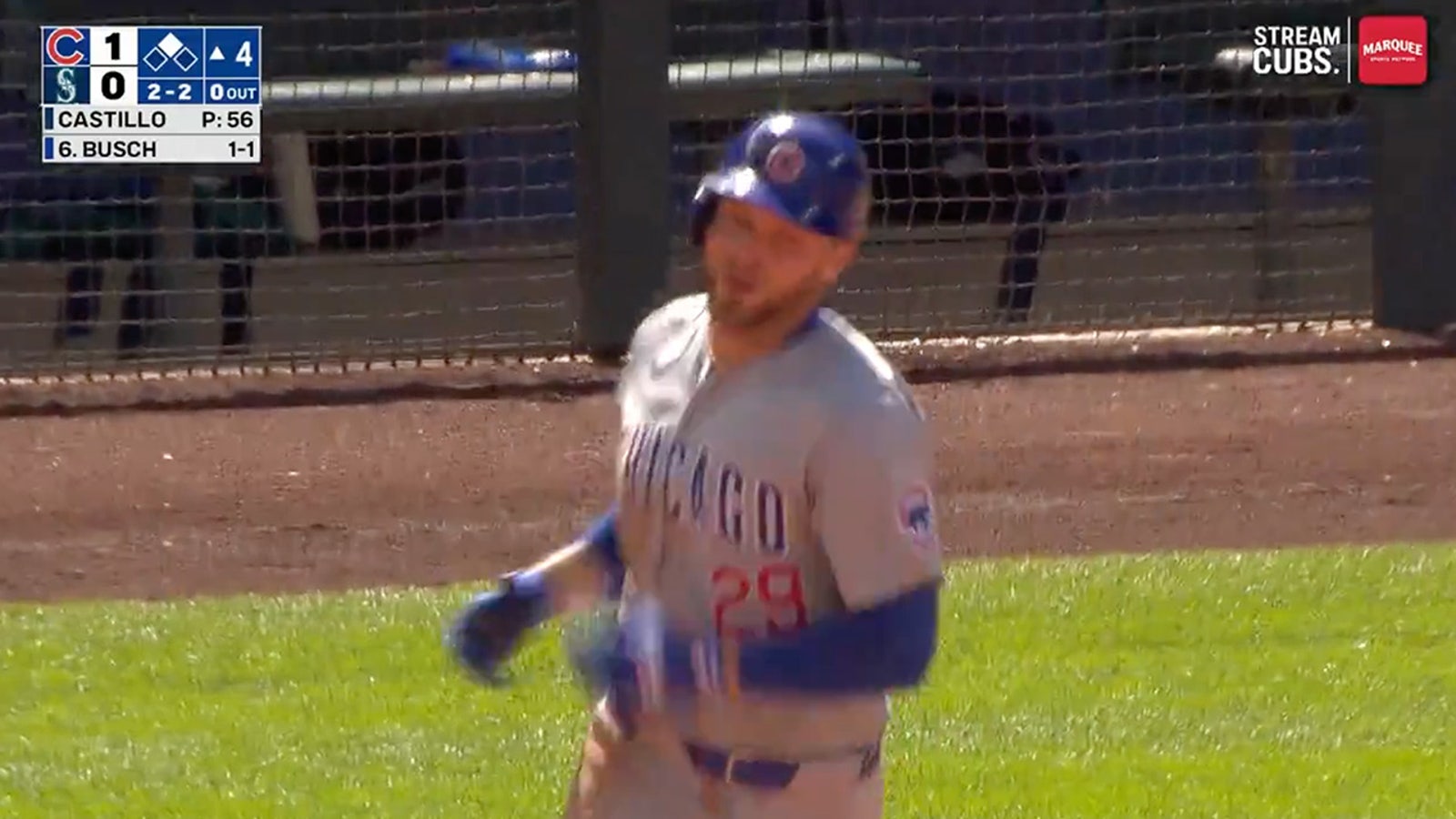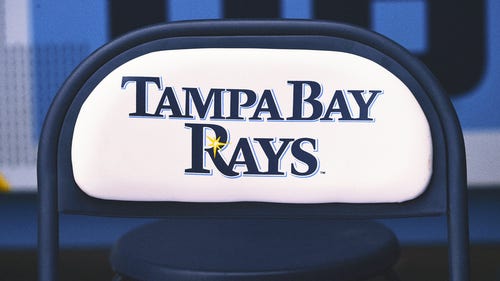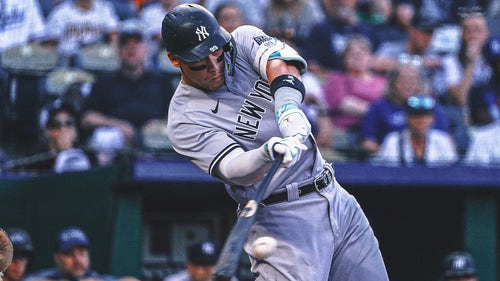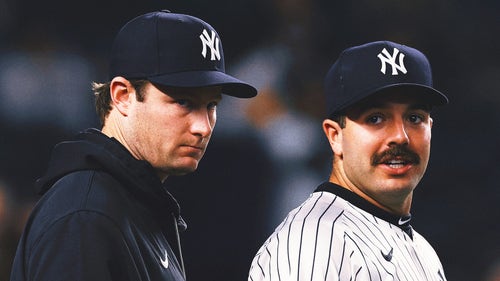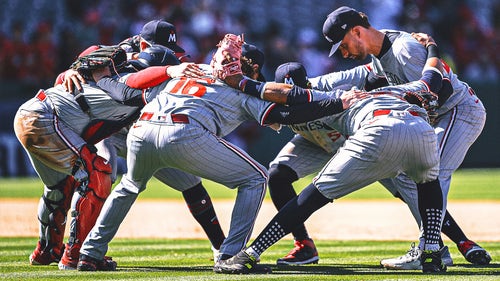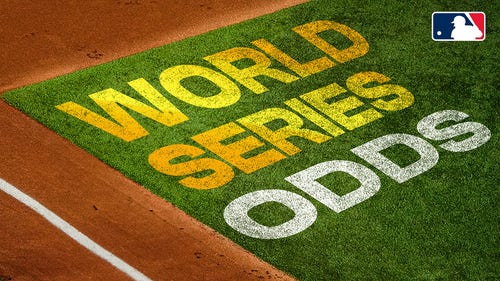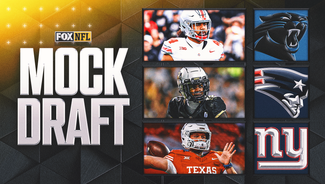
Why the Dodgers traded Michael Busch — and how their loss is again the Cubs' gain
In November 2022, the Los Angeles Dodgers did what at one point would've seemed unfathomable for a homegrown, 27-year-old former MVP and Rookie of the Year: They non-tendered him.
Cody Bellinger was due to make about $18 million in arbitration, and after back-to-back abysmal offensive years following surgery on a dislocated shoulder, the Dodgers thought the cost outweighed the value. They let him test the market.
The Chicago Cubs, seeing an opportunity, were willing to provide what the Dodgers wouldn't. They paid $17.5 million for one season of Bellinger, who rewarded them with a bounce-back year in which he finished 10th in MVP voting.
Now, it looks like the Dodgers' surplus might become the Cubs' reward once again.
Infielder Michael Busch didn't have Bellinger's MLB track record when the Cubs acquired him from the Dodgers in January, but he was a top-100 prospect who deserved an immediate big-league opportunity. Even the Dodgers recognized that.
"He showed very clearly that he doesn't belong in Triple-A and that he's a major-league player," Dodgers president of baseball operations Andrew Friedman said in December, a month before trading him for two lower-level, high-upside prospects in pitcher Jackson Ferris and outfielder Zyhir Hope.
Busch is demonstrating that now with the Cubs. The slick-swinging corner infielder tied a team record Monday when he homered in a fifth consecutive game. The streak came to an end Tuesday, but half of the Cubs' 14 runs over those five games (during which the Cubs went 3-2) came via Busch's homers.
That power production — a continuation of what Busch did last year at Triple-A Oklahoma City, where he hit 27 home runs, earned Pacific Coast League MVP honors and led the league in slugging and OPS — is all the more important now for a Chicago team moving forward without the injured Seiya Suzuki.
To acquire Busch, the Cubs didn't have to part with anyone they were counting on this year. So, how did the Cubs manage to add a gifted, MLB-ready offensive talent from a team with championship aspirations without losing anyone from their active roster?
Well, in some ways, that was by the Dodgers' design.
Busch seemed to be an obvious trade candidate this winter as a 26-year-old prospect without a clear path to playing time in Los Angeles, and the Dodgers needed to clear a 40-man roster spot to make room for free agent outfielder Teoscar Hernández.
Despite his offensive proficiency, questions about Busch's defensive future allowed him to fall to the Dodgers with the 31st pick in the draft five years ago. Primarily a first baseman at North Carolina, the Dodgers played him mostly at second base when his minor-league career began while also working him in at first base, left field and third base, where he logged most of his time in 2023 in an effort to carve a role for the big-league club. Like Muncy, Busch experienced his share of defensive shortcomings at the position last season. He committed 13 errors in 61 starts at third base in Triple-A and another four errors at the spot in his 10 starts at third base with the Dodgers.
But his bat was never a question.
Only four other minor-leaguers tallied more home runs than Busch from 2021 to 2023, and he had a higher batting average, more walks and more doubles than any player ahead of him on that list — a testament to his special offensive profile.
As a left-handed hitter with tremendous power and discipline, Busch drew comparisons to Max Muncy. Fittingly, his first taste of the majors came when Muncy went on the paternity list last year.
But Busch's 27 big-league games last year came in sporadic stints — three games in April, four in May, eight in June, nine in August and three in September. He was called back and forth from Triple-A three different times, and he never gained much traction as he struggled to a .167/.247/.292 slash line in limited action while bouncing around defensively, getting 10 starts at third base, seven at designated hitter and one at second base while serving as a late-game replacement at first base and in left field.
He needed more time, which wasn't going to come in Los Angeles.
Busch's best position seemed to be first base, where Freddie Freeman is under contract for the next four years. With Shohei Ohtani occupying the DH spot, Muncy signing an extension, Gavin Lux back from a season-ending knee injury and Mookie Betts moving more permanently to the infield, there was no clear path to a regular role in 2024. In addition, the Dodgers already had another bat-first infield prospect in Miguel Vargas.
"There are a lot of different paths we can go down, some of which create more opportunity, some of which make it harder," Friedman said before the trade. "Obviously, we'll have more clarity as we go, but I think for Michael Busch, he did everything he possibly could to knock the door down."
It just so happens that he's doing that in Chicago for a team that needed the injection of power in the lineup and help in the corner infield.
Busch has been a perfectly adequate defensive first baseman in the early going, which is all he needs to be to help a major-league club with his bat. After a slow start offensively, he found the offensive rhythm that scouts projected, pacing the Cubs with a 1.073 OPS.
Given the Dodgers' offensive struggles at the bottom of the lineup to start the year — Lux is slashing .157/.218/.176, Chris Taylor is 1-for-35, as a team their left fielders are hitting a league-worst .091, and Teoscar Hernández is their only outfielder with an OPS over .600 — it's possible the Dodgers end up regretting their decision.
Then again, this winter was the last time they could trade Busch while retaining value for the aging prospect and restocking the lower levels of the minors.
In exchange for Busch, the Dodgers received Ferris, a 2022 second-round pick out of IMG Academy who was ranked by MLB Pipeline as the Cubs' No. 8 prospect at the time of the trade, and Hope, a 2023 11th-rounder who flashed his potential in the Arizona Complex League last year, where the 18-year-old launched three homers, knocked in nine runs and stole three bases over 11 games.
While Ferris hasn't exploded out of the gate this year after an intriguing performance at low-A Myrtle Beach as a 19-year-old last season (3.38 ERA, 12.4 K/9), Hope is turning heads at low-A Rancho Cucamonga with a 1.192 OPS to jumpstart his first full pro season.
It is in part through these types of deals that the Dodgers, despite picking late in the draft every year, have consistently managed to produce a steady supply of prospects to supplement their big-league stars. They knew Busch was ready for a major-league chance, one that wouldn't come at the expense of Freeman or Ohtani's playing time, and they wanted to give Lux an opportunity after an ACL injury wiped out the former top prospect's 2023 season.
A few years from now, the prospects they acquired might remove some of the sting of Busch's terrific start in Chicago. But given their current struggles at the bottom of the lineup — their Nos. 7-9 spots in the order collectively have the second-lowest OPS of any team in the majors — it's fair to wonder how Busch's bat might have made an impact, one that the Cubs are feeling right now as a former Dodger catalyzes their offense for a second straight season.
Rowan Kavner is an MLB writer for FOX Sports. He previously covered the L.A. Dodgers, LA Clippers and Dallas Cowboys. An LSU grad, Rowan was born in California, grew up in Texas, then moved back to the West Coast in 2014. Follow him on Twitter at @RowanKavner.






































































































































